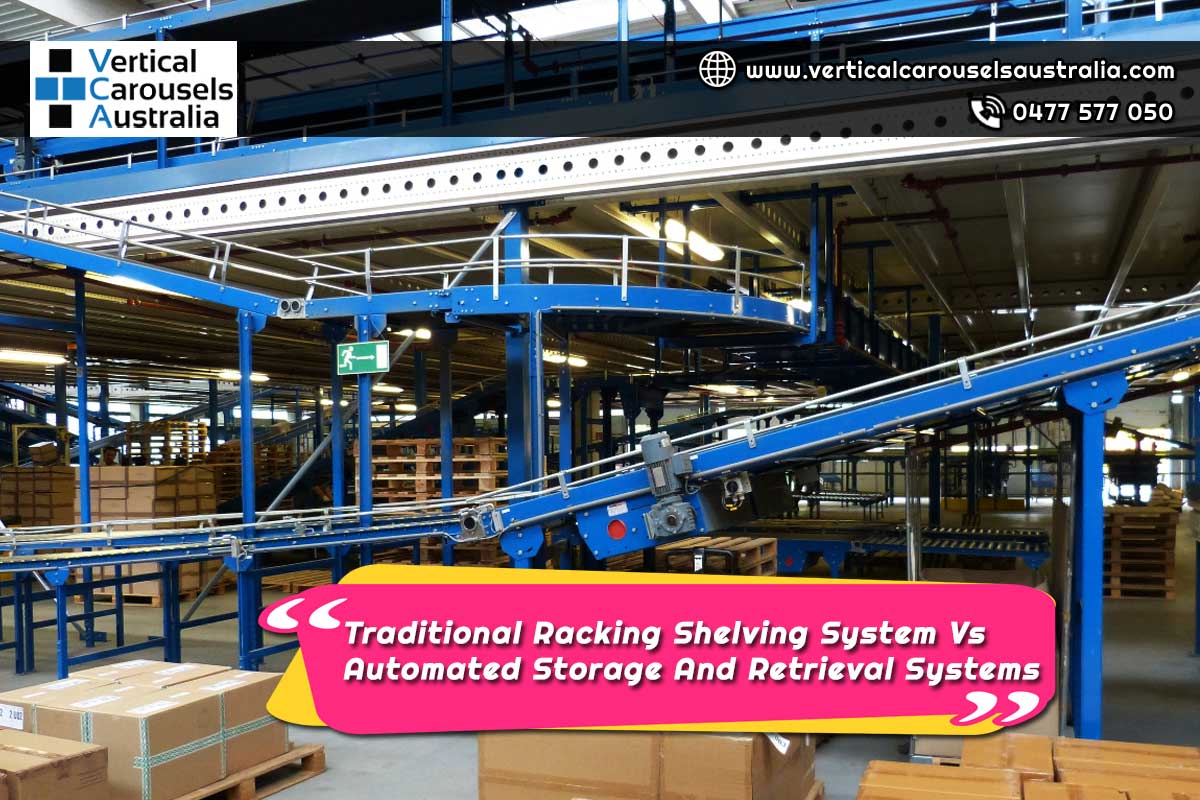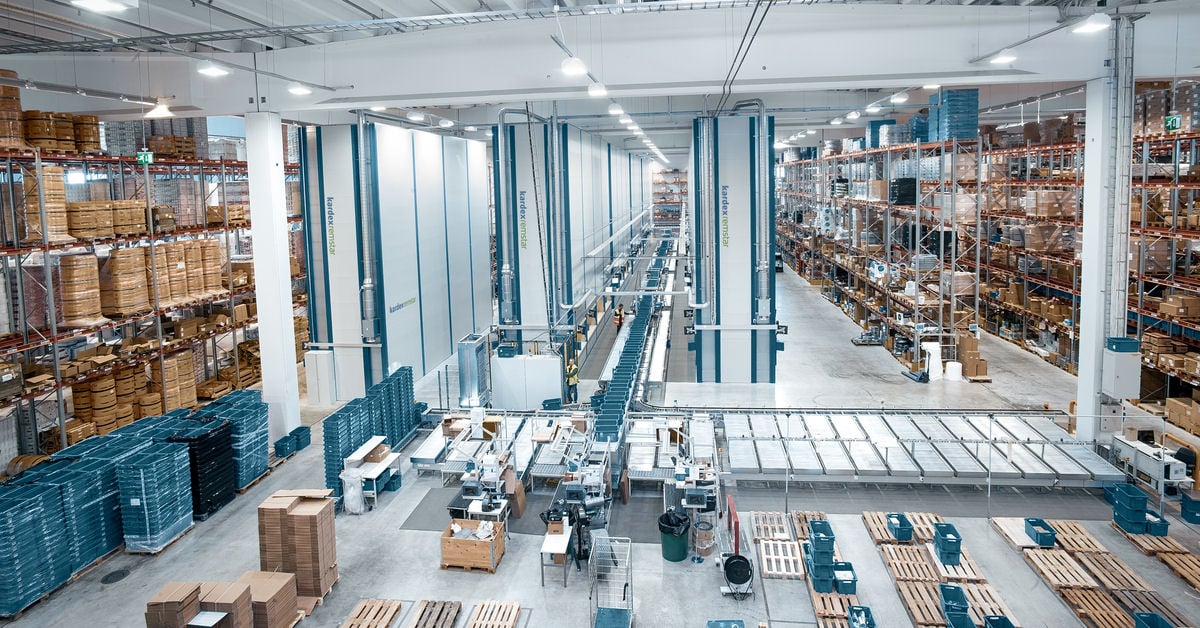
Over traditional shelving and rack systems, automated storage and retrieval systems (AS/RS) can give the most efficient way to conserve resources. Why? They increase picking efficiency, improve order fulfilment, and improve worker safety.
Items have always been stored on various forms of freestanding stationary shelves or racking in businesses. These kinds of systems will always have a place in meeting storage needs, because they are classic, simple, and appear to be cost-effective. However, there may be hidden costs that offset the cost-effectiveness of stationary shelving, depending on your sort of business.
The flaws and strengths of some of the most typical traditional warehouse storage systems will be discussed in this article. See this post for a more in-depth look at classic static shelving.
Traditional static storage system solutions can be inefficient in bigger warehouse-type operations because:
Industrial shelving is a strong storage system for small items that are commonly found in warehouses and factories. Multi-level industrial shelving is possible. Operators pick up and place things by hand or with a ladder, reaching from floor level. Normally, all stocking and retrieval are done by hand.
Racking is often wider, deeper, and piled higher than shelving in terms of weight load capacities. To load and unload products such as large boxes or full pallets, forklift trucks and cherry pickers are routinely used. Hand-stacked storage can also be done on the lower levels of the racks.
This type of storage solution can take advantage of a warehouse facility’s vertical capacity, which can reach heights of 32 feet or more. However, they all make wasteful use of horizontal space. Furthermore, they necessitate the use of forklifts, which can be hazardous to operate.

Traditional 4-Post and Divider shelving are one of the most prevalent warehouse shelving types. In libraries and educational institutions, case shelving is the most common type of shelving. These types of shelves can be used in a variety of corporate settings, including medical offices, museums, libraries, and any other location where open shelving storage is prefered.
Pallet racking and shelving on wheels are put on tracks rather than the floor, allowing for greater storage flexibility. Because aisles open up when directed by an operator, mobile shelving eliminates the need for multiple fixed aisles. While this technique is quite effective at doubling or tripling a warehouse’s storage capacity, the sliding racks take time to set up, and products are accessed similarly to industrial and traditional shelving. It reduces productivity in the same way that traditional shelf systems do.
For operator access, static shelving rows are typically spaced at least 3-4 feet apart, with additional aisle space of up to 10-12 feet for machine access. One of the most significant drawbacks of this sort of warehouse storage system is the amount of time wasted by operators travelling up and down rows to store and pick a product, which reduces productivity.
Time is wasted due to a lack of visibility. It takes time to look for objects that are stored in boxes or containers, hidden behind other products, and items that are above and below eye level. Stocking inventory on static shelving works in the same way.
There is a lot of wasted space between the horizontal shelves, in addition to the space required for access aisles. There’s usually a lot of unused “air” between shelves for access to taller objects and items stowed behind front-facing storage. As a result, traditional shelf systems take up a lot of room and necessitate vast spaces.
Static shelving provides a risk to workers since commodities are handled manually. The dangers of objects falling from a high shelf, especially when utilising a ladder or hoist, range from the pressures and strains of retrieving stuff physically all day to the dangers of items falling from a high shelf. Workers are also in close contact as they travel along the aisles between shelves, preventing the social distancing required by Covid-19.
Due to the enormous volume of product inventory and the accompanying safety risks, warehouses and factories have had to rethink how products are stored and retrieved. The rise of automated storage systems has provided answers to the difficulties mentioned above:
Vertical lift modules (VLMs) and horizontal carousels are automated storage and retrieval systems that constitute a radical departure from typical static shelving.
A VLM is a tall machine that looks like a vending machine and has two rows of internal shelves to store inventory and items. To maximise the capacity of the VLM, the machine helps optimise the adjustable shelves and arranges the stored goods. As a result, a Modula VLM can save up to 90% of a warehouse’s area requirements.
By tapping an easy-to-use screen, an operator can have items automatically collected from within the VLM and delivered at an ergonomically suitable angle. Rather than wandering around the warehouse floor looking for stored products, the items are brought to where the worker is standing. The VLM removes several, wide aisles and dispersed shelves, resulting in significant space savings and increased productivity.
The automated warehouse storage solutions transfer the products directly to the operator, following the parts-to-pickers concept. Picking and replenishment times are reduced as a result of this. The operator may rapidly recognise which item should be picked as well as the quantity desired by using visual picking aids. This encourages high picking rates and improves picking accuracy significantly.
A horizontal carousel (HC) is similar to a vertical carousel, however, the contents move horizontally instead of vertically. Horizontal carousels, by their very nature, do not take advantage of vertical space as effectively as vertical warehouses (VLM). Nonetheless, they might save up to 60% of your floor space. They also have a significantly higher storage density than racks or shelves.
The VLM and HC essentially eliminate the safety concerns that traditional shelving creates. No more stress or strain from lifting objects from odd angles. No more chance of items falling from above; and compliance with social-distancing rules is built-in. Workers are less tired and more productive as a result of the changes. Employers can save money on labour costs including injuries, liability insurance, and downtime.
Modern warehouses are increasingly turning to automated storage and retrieval systems like the Modula VLM and Horizontal Carousel to suit their inventory management needs. No other warehouse storage solution compares to a Modula VLM when it comes to reducing space, increasing productivity, and ensuring the safety of your warehouse operations.
Do you have any doubts about whether integrating an automated warehouse storage system into your business operations is a good idea? Make contact with a storage expert. We will be able to answer your concerns and give recommendations depending on your needs because we have years of experience with storage solutions.
Click this audio version: